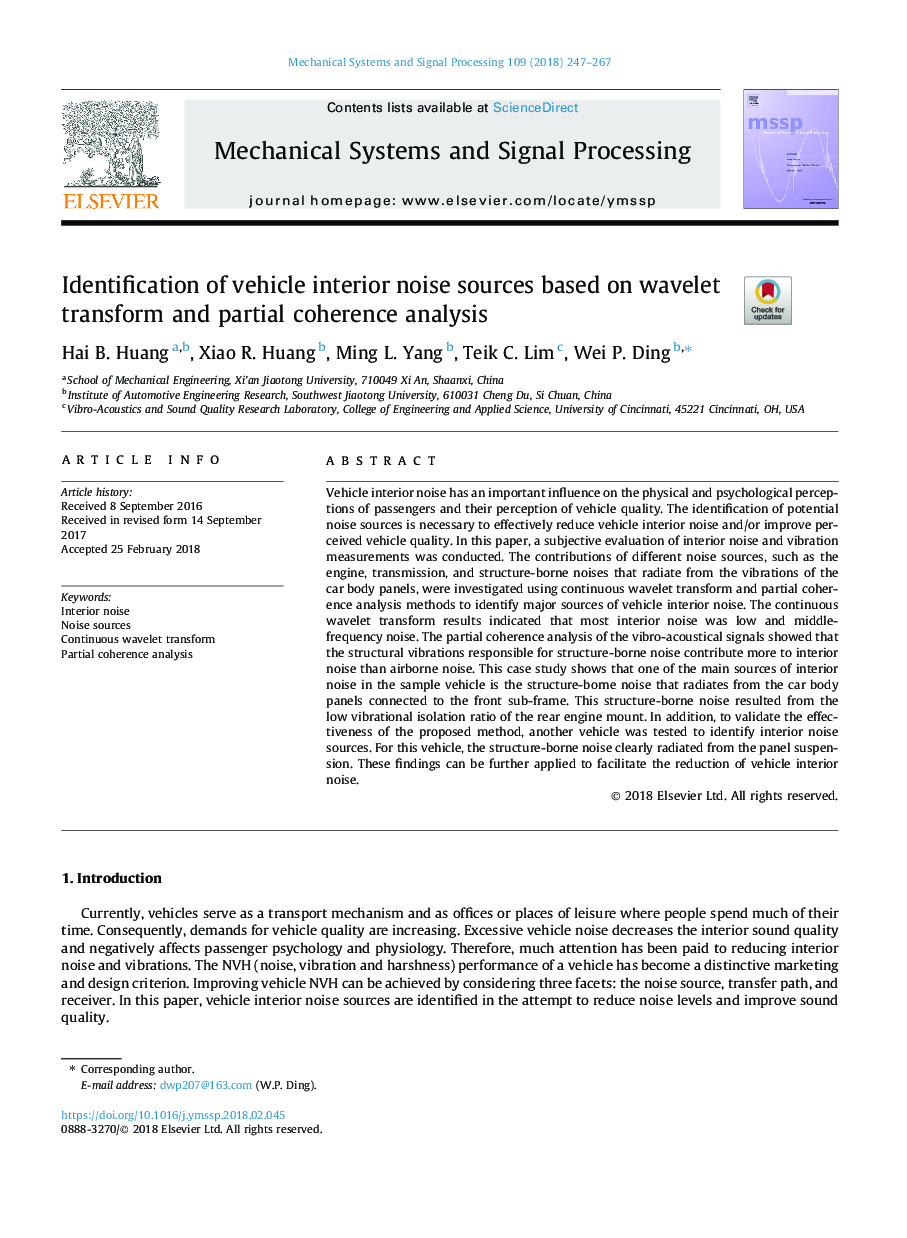| Article ID | Journal | Published Year | Pages | File Type |
|---|---|---|---|---|
| 6954114 | Mechanical Systems and Signal Processing | 2018 | 21 Pages |
Abstract
Vehicle interior noise has an important influence on the physical and psychological perceptions of passengers and their perception of vehicle quality. The identification of potential noise sources is necessary to effectively reduce vehicle interior noise and/or improve perceived vehicle quality. In this paper, a subjective evaluation of interior noise and vibration measurements was conducted. The contributions of different noise sources, such as the engine, transmission, and structure-borne noises that radiate from the vibrations of the car body panels, were investigated using continuous wavelet transform and partial coherence analysis methods to identify major sources of vehicle interior noise. The continuous wavelet transform results indicated that most interior noise was low and middle-frequency noise. The partial coherence analysis of the vibro-acoustical signals showed that the structural vibrations responsible for structure-borne noise contribute more to interior noise than airborne noise. This case study shows that one of the main sources of interior noise in the sample vehicle is the structure-borne noise that radiates from the car body panels connected to the front sub-frame. This structure-borne noise resulted from the low vibrational isolation ratio of the rear engine mount. In addition, to validate the effectiveness of the proposed method, another vehicle was tested to identify interior noise sources. For this vehicle, the structure-borne noise clearly radiated from the panel suspension. These findings can be further applied to facilitate the reduction of vehicle interior noise.
Related Topics
Physical Sciences and Engineering
Computer Science
Signal Processing
Authors
Hai B. Huang, Xiao R. Huang, Ming L. Yang, Teik C. Lim, Wei P. Ding,
